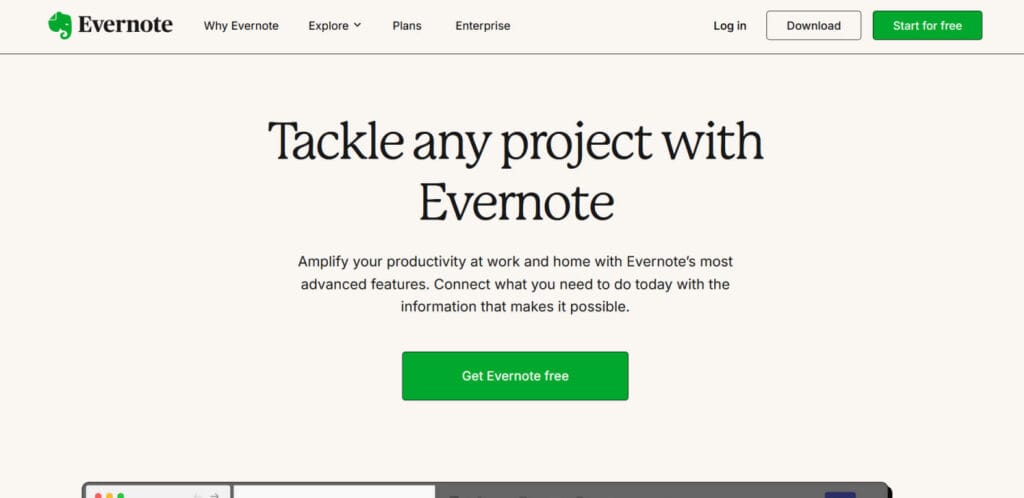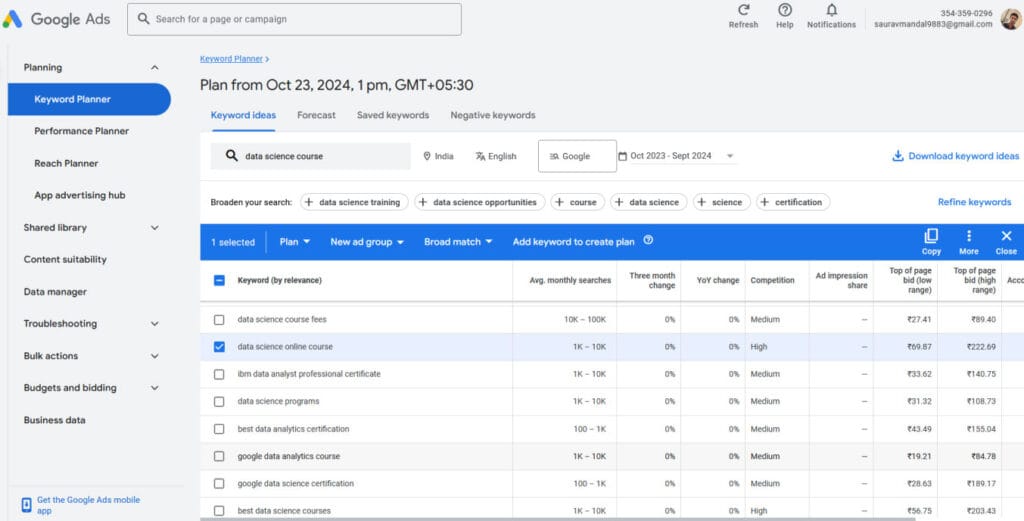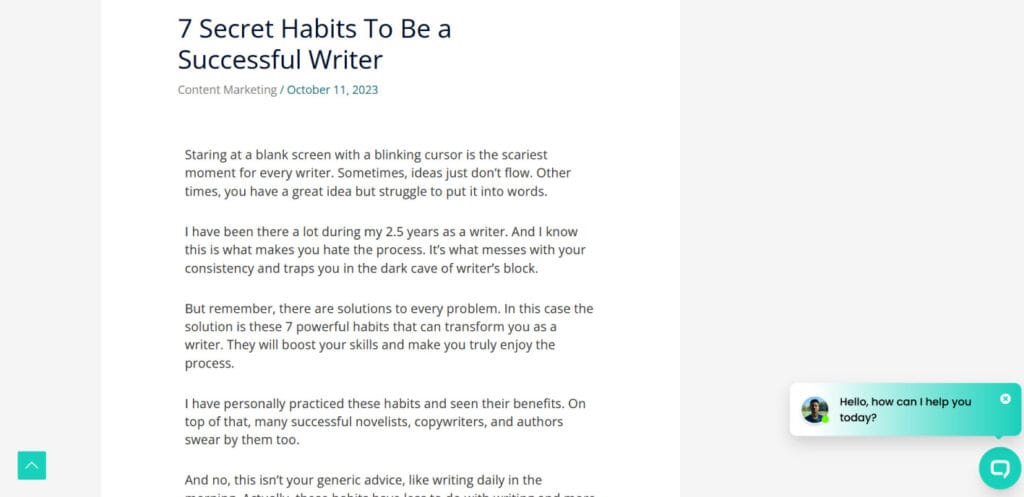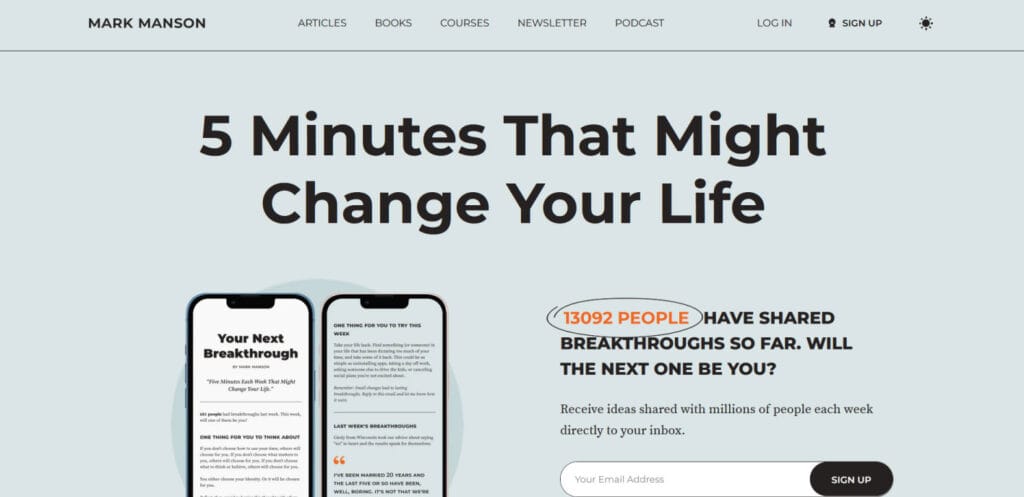“If your business is not on the Internet, then your business will be out of business,” Bill Gates said back in the 1990s. And it’s truer now than ever.
Growing your business online helps you reach your target audience, get them to like you and trust you, and convert them into your loyal customers without breaking the bank.
With over five billion internet users globally, more and more people are making online purchases. A report estimates that retail e-commerce sales worldwide will be more than USD 4.1 trillion in 2024.
There are multiple ways to increase your online presence. You can use pay-per-click ads, write SEO-focused blog posts, build an email list, share quality videos on YouTube, post on social media, or work with influencers.
In this post, I’ll share seven effective and actionable strategies to grow your business online. This will help you get amazing results on a small budget.
But first things first, don’t try to copy strategies from big companies. Marketing for small companies and big companies is completely different. Let’s understand that first:
Big Company vs. Small Company Marketing
Big companies use mass marketing or branding. These campaigns are run to remind their prospects and customers about their brand, products, or services.
Companies like Apple, Nike, Coca-Cola, and Red Bull run a lot of creative ads on TV, billboards, and digital platforms. The goal isn’t to get immediate sales but to stay at the top of the consciousness of their audience.
Here’s an example, an ad by Nike that doesn’t even talk about Nike:
As you can guess, this type of marketing is expensive, time-consuming, and focused on a broad audience.
If you run a small company, you need more targeted and affordable marketing- which brings us to direct response marketing.
In direct response marketing, you focus on a specific problem of a specific audience and try to solve it either through education or a specific solution.
Here, you craft messages using sales copywriting and reach your audience through emails, blog posts, pay-per-click ads, or social media posts.
The goal of this type of campaign is to get immediate results from the audience, whether it’s signing up for an email, filling out a form, or directly buying the product.
Unlike branding, you can measure the results of your direct response campaigns and optimize their performance.
Here’s a simple example of direct response marketing strategy:

Direct response marketing is the only way for a small company to reach its audience and get them to respond on a small budget.
So, now we’ll see some direct response strategies to grow your business online and find more customers.
How to Grow Your Business Online: 7 Strategies that (almost) Always Works
Identify your target audience, craft an irresistible message for this target audience, and deliver this message to them either through your website, email, social media, or advertising media. That’s the short answer to how to grow your business online. Here’s the long one:
1. Define Your Target Audience
Crafting a marketing message becomes difficult if you don’t know exactly who your target audience is. It may seem obvious, but I’ve worked with many small companies that believe everyone on the internet is their audience.
That’s why you need to define a specific target audience for your business. For example, if you sell data science courses, you might target final-year college students pursuing a Bachelor of Technology.
Once you identify your audience, research them and put yourself in their shoes to understand them. Know what they believe, how they view the world, what keeps them awake at night, and what’s on their mind first thing in the morning.
You can create customer avatars—fictional profiles of your ideal customer—by listing details like demographics (age, gender, location), pain points, dreams, fears, likes, and dislikes. This will help you craft a targeted message that grabs your audience’s attention and speaks directly to them.
2. Create a Compelling Website
There are over 1.1 billion websites in the world, with 252,000 new ones created every day. This highlights the importance of having a website.
In fact, 71% of small businesses already have one. Your website is the center of all your marketing efforts. It’s where customers go to learn more about you, and it’s where conversions happen.
If you already have a website, your next step is to make it compelling. Here’s how you can do that:
- Write sales copy that speaks directly to your audience and gives them a great offer.
- Use clear CTAs like “Buy Now” or “Contact Us” to guide visitors toward specific actions.
- Break content into subheadings, with plenty of white space for easy reading.
- Design pages with consistent color schemes, high-quality images, and attractive formatting.
- Make sure your site loads quickly and is mobile-responsive.
- Place a navigation menu at the top and bottom so that users can explore the site easily.
- Create an About page that tells your story and highlights your team’s expertise.
- Add social proof (testimonials, reviews) on the Home and Product pages to gain trust.

These essentials will ensure that visitors who land on your site quickly understand how you can solve their problem, what you offer, what makes you unique, why they should trust you, and how they can become your customers.
3. Make Your Product Pages SEO-Friendly
How to grow your business online for free? Use search engine optimization (SEO).
Google currently has more than 90% of the search engine market share. And over 8.5 billion Google searches are made per day. So, it makes sense to focus on SEO and optimize your site for Google.
SEO is a powerful way to increase organic traffic to your website, reach your target customers, and increase brand awareness.
Start by making your product pages SEO-friendly. You can do that by collecting high-intent keywords and naturally including them on your product pages. Let me explain:
You already know your target audience. Now, identify what they search on Google. Those are the keywords you have to target.
Let’s say you offer data science courses to college students. You can simply search the seed keyword, “data science course,” on a keyword research tool like Google Keyword Planner (free) or Semrush (paid).

Focus on keywords with a higher buying intent- the keywords your audience searches when they are more likely to buy. For example, “data science online course” or “data science course for beginners” are keywords with more buying intent than “benefits of learning data science” or “how to learn data science.”
Once you’ve collected high-intent keywords, include them naturally in key areas like page titles, meta descriptions, URLs, headings, subheadings, image alt text, and your content.
This helps search engines understand what your page is about and rank it higher for relevant searches. In fact, 39% of marketers say optimizing on-page content with keywords is their most effective SEO technique.
You can focus on other SEO factors to improve ranking, like page loading speed, mobile responsiveness, content quality, E-E-A-T (Experience, Expertise, Authoritativeness, Trustworthiness), user experience, and internal links. I’ll cover these in future blog posts.
But everything starts with keyword optimization. Done smartly, it can make your website discoverable and help you outrank competitors. If you want more help, you can contact me. I’ve helped dozens of companies rank higher on Google, increase organic traffic, and build brand awareness using SEO best practices.
4. Use Pay-Per-Click Ads
How to grow your small business online quickly? Use pay-per-click (PPC) ads.
These ads charge you a fee each time someone clicks on them, and they can appear in search engine results, website banners, or on Facebook, LinkedIn, Twitter, etc.
PPC ads like Google Ads drive traffic to your website, increase your visibility, and generate leads. In fact, 90% of internet users see Google Ads.
Now, you may think about how PPC ads differ from SEO. Glad you asked. SEO helps you attract organic traffic and build long-term authority, which often takes three or more months. PPC ads, however, provide instant traffic by letting you pay for each visit.
If you are new to Google ads, you can start with Google search campaigns. It allows your ads to appear at the top of search results when users search for specific keywords.

Here’s what you’ve to do:
- Define your goal (generate leads for my data science course) and budget ($3000/month).
- Create a campaign targeting high-intent keywords, the ones we identified in the 3rd strategy.
- Build a landing page with compelling copy, an irresistible offer, and a clear CTA.
- Drive traffic to the landing page, where visitors can convert into leads or customers.
Google ads let you target your audience effectively, bring immediate results, and measure and optimize performance. This ensures you get maximum value, even with a small budget. No wonder for every $1 you spend on Google Ads, you can earn an average of $2 in revenue.
5. Create Value-Packed Content
How to grow your business online with long-term results? Create value-packed content and share it across the internet.
Content marketing is powerful. 70% of people say they’d rather learn about a company through articles and blog posts than through ads. That’s why 91% of B2B and 86% of B2C marketers use content marketing.
Content helps you increase brand awareness, build authority, gain trust, and find new customers. The most common platform for content creation is your blog.
You can also reach your audience on LinkedIn, Twitter, YouTube, and Instagram. But in the beginning, focus on the platforms where your target audience spends the most time.
For example, if you’re a B2B business offering team communication software, start with your blog and LinkedIn. As your audience and team grow, you can expand your content creation to other platforms.
The secret to success in content marketing? Provide crazy value consistently, either through education, entertainment, or inspiration. And try to provide more value than your competitors. If they write a 2500-word blog post, you create a more engaging and in-depth post with 3500 words.
It may take some time, but it’ll pay off. Companies that blog see 13 times more ROI than companies that don’t.
So, to get started, develop a content strategy. Define your target audience and what topics they’re interested in. Also, define where you’ll get content inspiration, what will differentiate your blog from others, how you’ll promote your products or services in blog posts, and what metrics you’ll track for success.
Once you have a basic strategy, write blog posts focusing on educational keywords. Try to solve your target audience’s problems, answer questions, and offer actionable advice. For example, if you offer data science courses, you can create posts focusing on keywords like “how to learn data science,” “data scientist salary,” or “data science vs. data engineering.”
Make your posts engaging by using short paragraphs, subheadings, bullet points, and relevant images or videos. Include a CTA like “Visit the Product Page,” “Buy Now,” or “Sign Up.”

Smart tip: Repurpose your blog content for social media or videos. For example, turn the best-performing blog posts into a Twitter thread or LinkedIn carousel. You can also use blog posts as scripts for YouTube videos. This way, you can get more out of your content efforts.
6. Use Email Marketing to Nurture Leads
Is email dead? Not at all. In fact, the number of email users keeps increasing. Research shows that there are over 4.5 billion email users worldwide in 2024, and this number is projected to grow to over 4.8 billion by 2027.
Email marketing is one of the best ways to build relationships with your prospects and customers. It’s cost-effective, allows for personalized messaging, and lets you track performance to optimize your campaigns.
In fact, every dollar spent on email marketing can return $36—a 3600% ROI!
So, how do you begin? First, you need an email list. If you don’t have one yet, encourage website visitors to sign up to your email.
You can use popups, chatbots, lead magnets, or simple calls to action (CTAs) in your blog posts to get more signups. If people enjoy your blog posts, they’ll want more of it delivered straight to their inbox. So, tell them why they should join, and make your offer compelling. Here’s an example:

As your list grows, send valuable emails that address their needs and solve their problems. This could include educational content, product updates, or special offers. Segment your list based on user behavior (like past purchases or clicks) to make your emails more personalized.
Use attention-grabbing subject lines, persuasive copy, and clear calls to action to boost open and conversion rates. This will guide leads through your sales funnel, from discovering your brand to making a purchase to becoming loyal brand advocates.
7. Hire an Expert to Grow Your Business Online
Let’s admit that growing a business online isn’t easy. You’ll need to learn various skills, make mistakes, improve, and gradually gain expertise. So, if you lack the time or know-how, hiring a professional is the smartest thing to do.
If you need help increasing organic traffic, reaching the right audience, and converting them into leads or customers, I would love to help you. Over the past three years, I’ve helped several businesses rank #1 on Google for multiple keywords, attract high-intent traffic, and generate leads.
How do I do it? Well, I research your audience, understand your business, analyze competitors, find the right keywords, and use SEO best practices to create compelling content that speaks directly to your audience.
This is how you can get your target audience to know, like, and trust you enough to become your customers. Visit this page to learn more about my content marketing services.
About the Author

Saurav Mandal
I’m a certified content marketer, SEO content writer, and copywriter with over 3.5 years of experience.
I’ve helped several startups and small businesses boost organic traffic, increase brand awareness, build authority, and improve conversions with compelling content and copy — something I take great pride in.
I also own this website, where I’ve been blogging since 2021, sharing everything I’ve learned about marketing and life (learning is what makes me happy).

